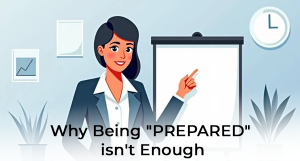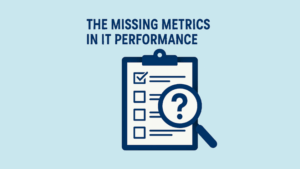IT Transformation Is a Big Term. Here Are 3 Practical (Yet Different) Ways to Plan Yours.

Insight. Inspiration. Influence. For a new generation of IT leaders.
A lot of IT organizations are taking up the challenge of transformation.
But what does that big word “transformation” really mean?
Is there just one way to transform?
How do you know which path is right for your organization?
More importantly, how do you give that transformation a personality that resonates with your global IT team—and your stakeholders?
The truth is: there’s no single path to transformation.
But there are patterns. And when you pick the right one, everything gets clearer: your strategy, your message, your momentum.
Here are three distinct and proven approaches to IT transformation:
1. Stakeholder-Centric Transformation
💡 Shift the question from “Is IT working?” to “Is IT working for the business?”
This approach begins with listening—and measuring what business partners truly experience.
Using tools like MeasureIT, IT teams benchmark how stakeholders perceive value, trust, alignment, and quality.
This gives transformation a business-driven foundation and makes the case for change undeniable.
Best for orgs where:
- IT is seen as a cost center
- Strategic priorities often misfire
- Business alignment feels like a moving target
2. Leadership-Driven Cultural Shift
💡 IT transformation starts with how IT shows up.
This model centers on how IT leaders influence and inspire. It’s about raising the emotional intelligence of the IT function—building credibility, earning trust, and communicating with purpose.
The strongest transformations often begin here: with leaders who shift the culture, build business intimacy, and lead with presence.
Best for orgs where:
- A new CIO wants to reset the tone
- IT is technically competent but under-leveraged
- Cultural change is needed to evolve the IT brand
3. Data-Driven Operational Reengineering
💡 Transform the system behind the scenes.
This is the systems-level approach. It’s about structure, metrics, and accountability. Using stakeholder and internal performance data, IT builds a repeatable engine for continuous improvement—tracking the real-world impact of changes over time.
Best for orgs where:
- Complexity needs to be tamed
- There’s a need to show real ROI to leadership
- Teams want clarity on what’s working—and what’s not
So, What’s Your Transformation Story?
Each approach gives your transformation a clear voice—and a strategy your people can rally behind.
Whether you start with stakeholders, culture, or data, the goal is the same: 👉 To make IT a more credible, aligned, and influential partner to the business.


